Windows 10 Incremental Backup | Wise Backup Method
There are different ways to backup your Windows 10 computer, and one of the most space-saving methods is an incremental backup. With this guide, you will learn everything you need to know about Windows 10 incremental backup, including what it is and how to create one.
What Is An Incremental Backup?
An incremental backup is a type of backup that only saves new or changed files since the last backup. This means that if you have multiple backups, each subsequent backup will be smaller in size than the last. This is opposed to a full backup, which copies all files every time a backup is made.
There are several advantages to using an incremental backup:
Smaller file sizes: as only new or changed files are backed up, the file size of each subsequent backup will be smaller. This can save you a lot of storage space, especially if you create regular backups.
Faster backups: only new or changed files need to be copied. An incremental backup can be completed more quickly than a full backup.
Fewer data to transfer: if you are backing up your files to an online service, an incremental backup will use less bandwidth as there are fewer data to transfer.
The picture below gives you a more intuitive view of creating an incremental backup.
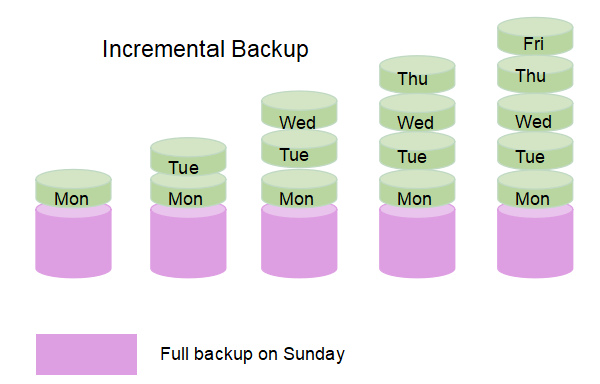
Does Windows 10 Have A Built-in Incremental Backup Program?
You might know that on Windows 10, there are two built-in backup utilities: File History and Backup and Restore (Windows 7). Backup and Restore (Windows 7) helps users create system images, and File History backs up different versions of files.
More specifically, File Historyonly "backs up copies of files that are in the Documents, Music, Pictures, Videos, and Desktop folders and the OneDrive files available offline on your PC." So Microsoft does not give us a specific and clear answer about whether File History creates incremental backups. But from the definition, we can see that the backup files File History creates are not incremental backups.
*Information source:File History in Windows
How to Create Incremental Backups on Windows 10?
There is no built-in incremental backup feature in Windows 10, but you can use a third-party backup program to create one. We recommend using Qiling Backup, as it is a free and easy-to-use backup program that supports Windows 11/10/8.1/8/7.
Why Qiling?
Since established in 2004, Qiling has dedicated itself to the field of data security and data recovery and then stepped into the field of disk management. With 18 years of experience, Qiling has earned the recognition of users and review sites. Its backup software - Qiling Backup, was highly approved by review sites such as Softonic and Lifewire. Reviews about Qiling Products >>
Why Qiling Backup?
If you want to choose a backup utility, Qiling Backup is your best choice. Why? Here are the reasons.
- Convenience: Qiling Backup designs with a simple and clear user interface. You can easily get along with this software as long as you follow the on-screen operating wizard.
- Speed: When backing up a computer, gigabytes of data processing are often involved. Whether you're creating a backup or restoring a backup, Qiling Backup will run and finish the task in minutes, saving you the most of your time.
- Powerful: Qiling Backup covers all possible backup demands, supporting you to backup files, systems, disks, and partitions. What's more, it also gives users full authority to manage the backup plan as well as backup files. For example, you can set up a backup schedule, customize the backup content, create an incremental or differential backup, exclude unwanted files from the backup plan, etc.
- Free: Some users may be reluctant to use third-party software because they fear it will lure people into paying for it. But you don't need to worry about Qiling Backup. It is totally free for users to create and restore backup files.
Qiling Backup also has a paid version with advanced functions added. If you're interested in it, check this link to see if you should pay for this software.
This article compares the free and home versions of Qiling Backup. You can see what the features of each version are.
Preparation:
Now you know why we recommend Qiling Backup and what it can do. Before starting to create an incremental backup, download Qiling Backup Free version from this button. And you should also prepare a backup drive to save your backup files.
Next, please follow the guide below to see how to create an incremental backup on Windows 10 with Qiling Backup.
Step 1. For the first time you use Qiling Backup to back up files, click File backup on the home screen, where you can select pictures, videos, documents and all other types of files to back up.

Step 2. Follow the paths to locate the files, folders or directoriesyou want to back up, select them all.
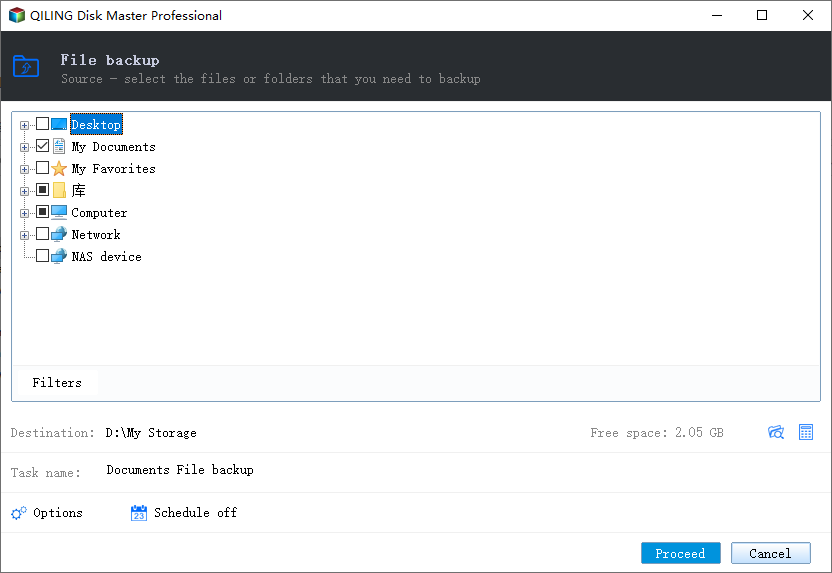
Step 3.Now you need to select a backup location to save and retain the backup.
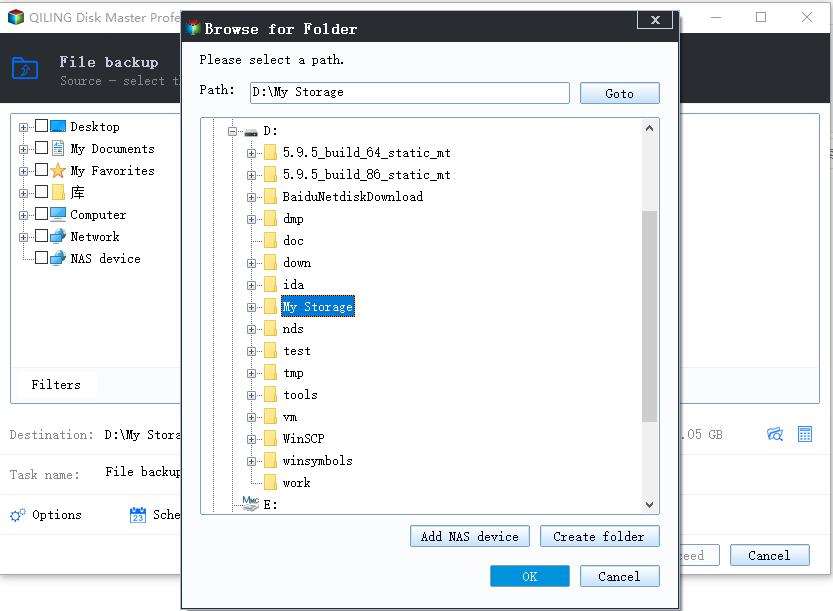
Step 4.Qiling Backup allows users to save the backup files to every device that is handy for you, like a local hard drive, external USB drive, SD card, network drive, or a NAS drive, plus a cloud drive of the Qiling brand. We personally recommend users to choose the cloud drive prior to aphysical drive to save important backups due to the greater accessibility, flexibility and safety.
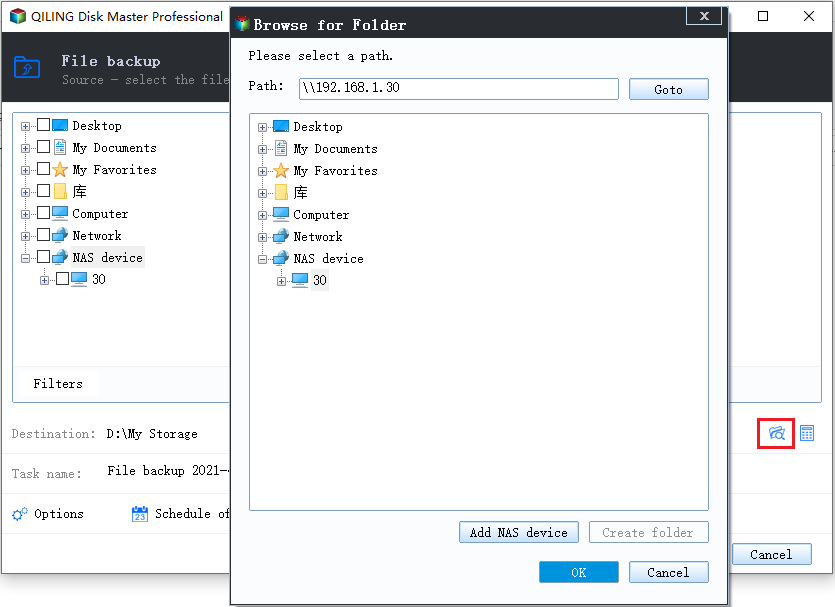
Step 5.If you're interested in an automatic and intelligent backup schedule for the next file backup task, go on with the "Options" setting. There you can encrypt a confidential file backup, compress the backup image size, or customize a backup scheme to tell the software in what time to start the next backup.
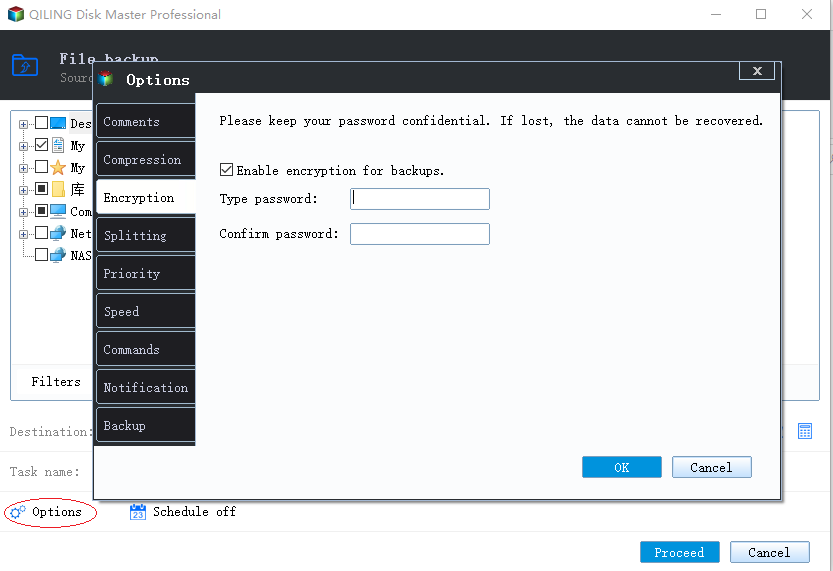
Customize an advanced and automatic backup task here:
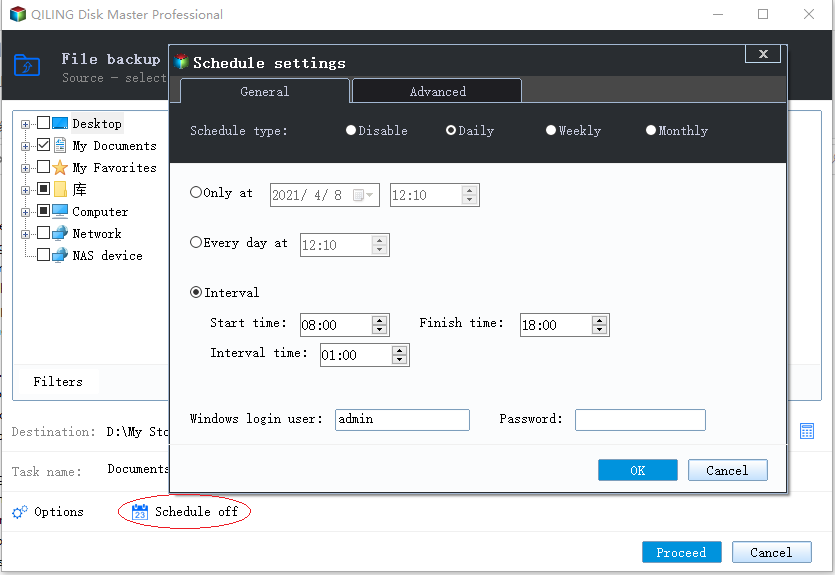
Step 6. Click "Proceed" to start the file backup process. Your completed backup files are visible on the left area in a card style.
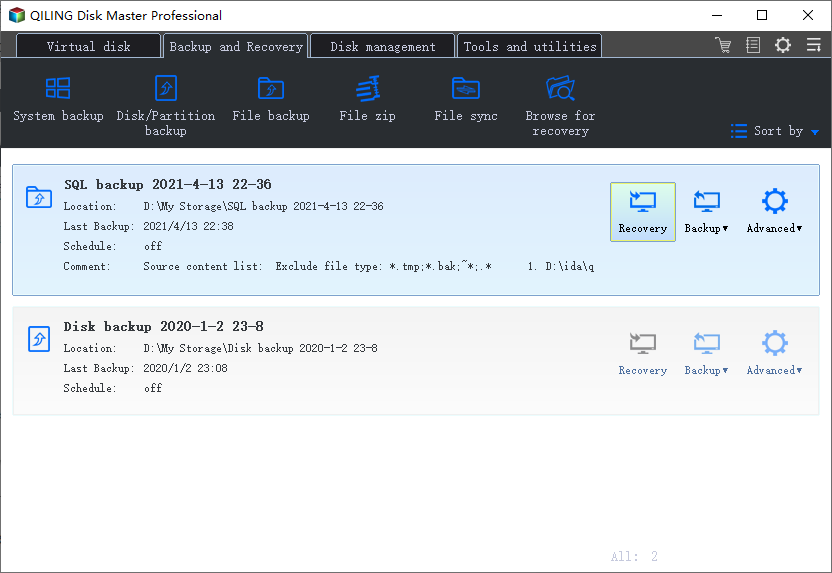
FAQs
1. Is Windows 10 file history incremental?
No. According to Microsoft, Windows 10 File History backs up copies of files in the Documents, Music, Pictures, Videos, and Desktop folders, as well as OneDrive files available offline on your PC. You can also add other files and folders to the File History backup plan. However, in Windows 11, users no longer have this option.
2. Is Windows Backup and Restore incremental?
No. Backup and Restore (Windows 7) can only create system images and system repair discs. If you want to create a backup to your system or just want to protect yourself from sudden corruption, Backup and Restore is good for you.
Related Articles
- How to Backup Google Drive to External Hard Drive [4 Easy Ways]
- One-click System Clone to HDD/SSD
- Clone GPT Disk in Windows 10 - This Method Would Work!
- Top 10 Offline Backup Software Recommended in 2022